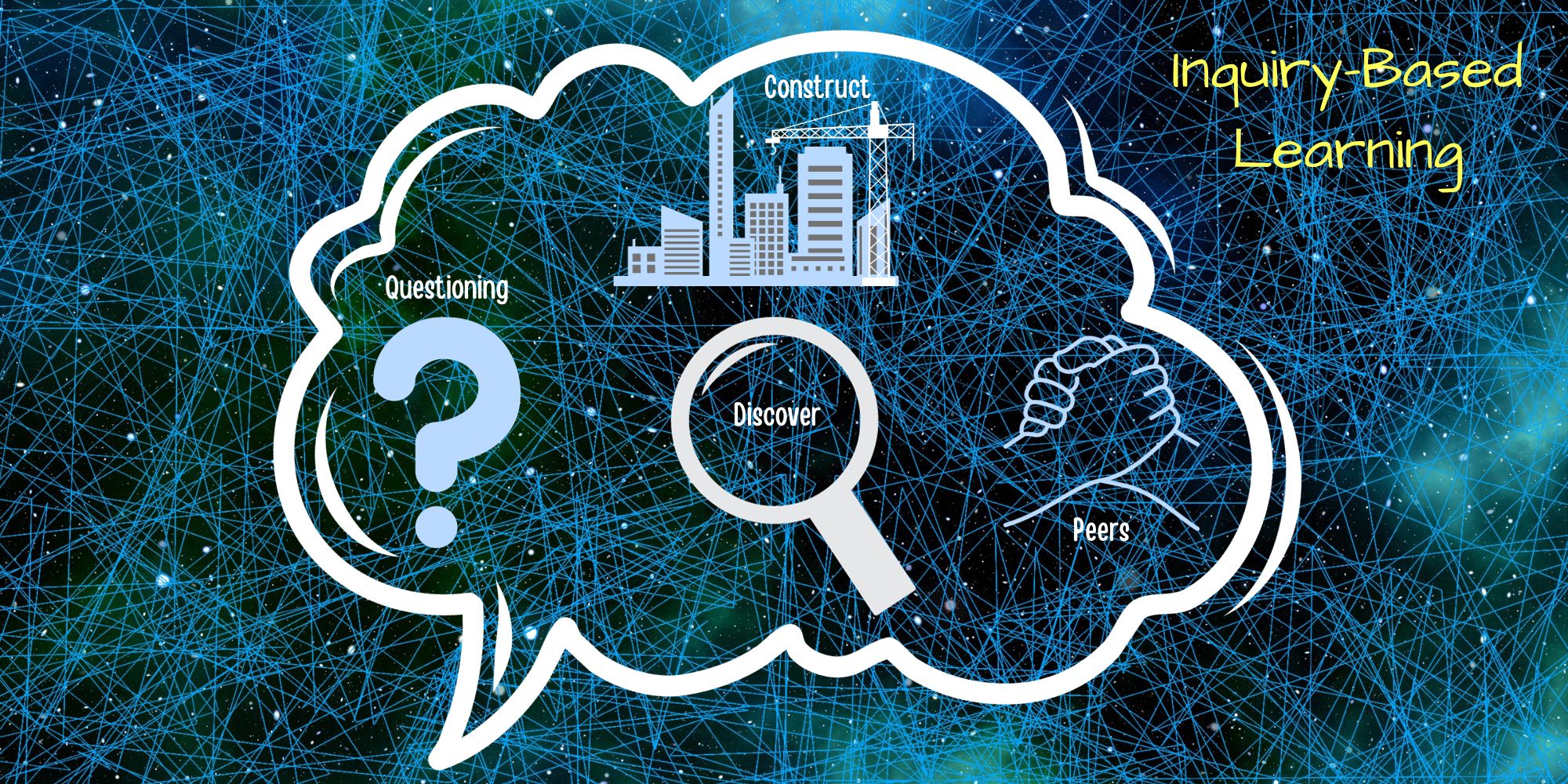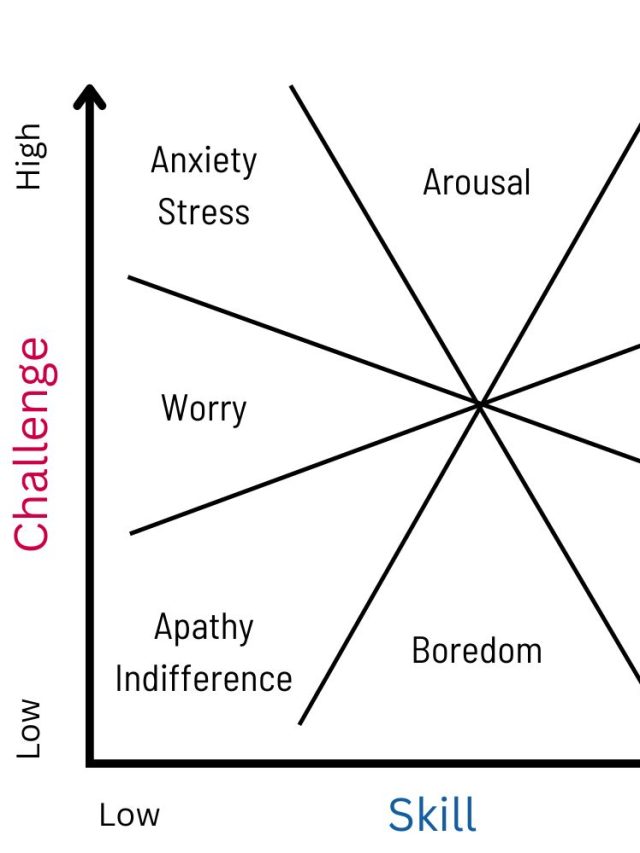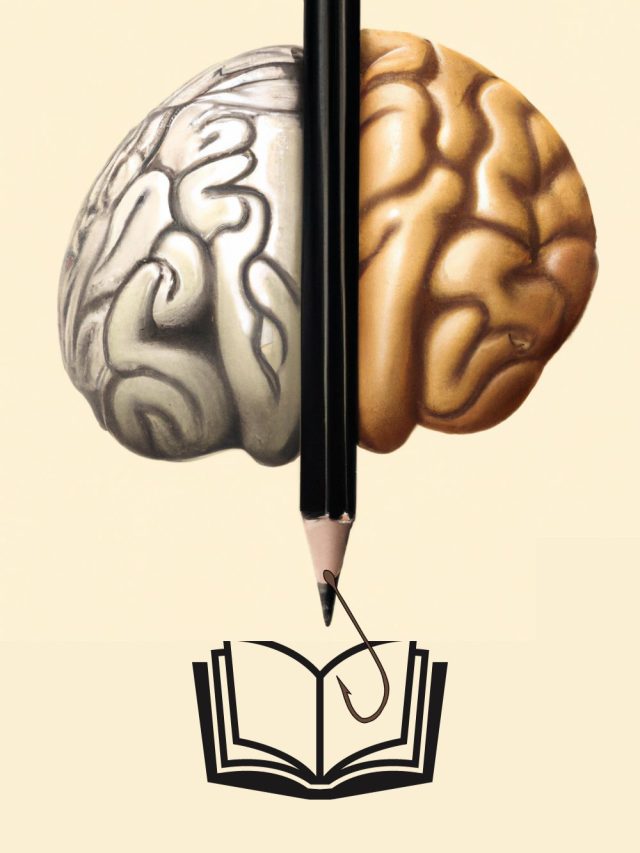A number of educational systems exist today. Educational psychologists, experienced teachers, thought leaders, and allied psychology researchers have invested a lot of time in studying how people should learn effectively. If you look at it from a very individual point of view that applies to academics, hobbies, on-the-job performance, and skill, it’s quite straightforward – have fun while learning, include a variety of inputs, learn with some relatability and social engagement, etc.
But from an educational point of view, the guiding philosophies emerge. One such philosophy is the
There are didactic learning systems, collaborative learning systems, rigorous testing-based systems, problem-based systems, inquiry-based systems, etc., based on 100 years of small and rebellious changes in educational philosophies. They’ve been a product of the world’s needs and demands.
All of these have been developed based on some sort of evidence. In this post, I’ll focus on the evidence that shows Inquiry-based learning is still an effective learning system standing on solid ground.
It isn’t a perfect system, but it has its value; criticisms at the end. (My top pick is the brain-based system.)
What is Inquiry-based learning?
Inquiry-based learning is an active form of student-centric learning where problems are discussed, scenarios and conditions are established, and `questions are encouraged as a path to knowledge instead of the teachers plainly delivering facts, formulas, and a clear linear trajectory toward knowledge.

An informal description of what peers do during an Inquiry-based session:
- Understand and frame questions with individual agency
- Think and look for evidence and counter-evidence that fills the ‘problem space’
- Use logic, insight, data, and guesstimates to explain the evidence or the mechanisms involved in a problem
- Choose and discuss the various ways a problem can be assessed
- Create arguments and discuss the problem holistically and at a granular level
There are multiple forms of inquiry, such as guiding/scaffolding, open discussions, evidence-based/logical, conjecturing, structured solving, and unstructured solving.
- Guiding/Scaffolding: Scaffolding is a way to minimize the difficulty of a task by giving some advantage. Scaffolding in a gym would be to have a trainer just nudge your hand. Educational scaffolding is giving hints or a nudge on how to approach a problem.
- Open discussions: Talking and cross-pollination between students and teachers can take a discussion much further than just a student or a teacher talking. Open discussions are more welcoming and far from a rehearsal of the learning material.
- Evidence-based/logical: This aspect of inquiry focuses on context and implications. If a student is told a region can only feed 500 people, the teacher asks what happens when the population doubles. This is then connected to real-world cases of overpopulation.
- Conjecturing: This form encourages a student to create a theory with limited information and then explore the topic via questions.
- Structured and unstructured problem solving: Some educational concepts need a discovery approach where students “stumble upon” facts or some kind of logic. This is seen with history and geographical stories. In math, some problems have strict rules and there is a precise structure to solving problems – if you deviate from the rules, you err.
A related aspect is creativity. Elusive as it may be to study scientifically, creativity is not just about the arts. It’s about thinking in novel ways, destroying domain barriers that prevent the borrowing of ideas from other domains, and essentially, creating. IBL’s objective is to help students get creative, but not necessarily innovative or artistic creativity.
I recommend reading this article to assist creativity in learning.
Students do not need to mindlessly regurgitate information that is learned. Although, memory is virtually mandatory for humans to have any sense of knowing anything. Inquiry is about thinking actively.
Take this simple math problem.
What happens when you square an odd number? Students know that an odd number can be defined as 2n +1.
Students can take the example of odd numbers and square them to see what patterns emerge.
Try squaring 3, 9, -5, -99, 6, 4, 10, 19, 17, 25, etc. Patterns will emerge that students can use to draw conclusions. The example allows discovery.
Looking at the example, they would conclude that they are odd. This was one form of inquiry based on examples and generalizing. Another form is finding out what happens when 2n + 1 is squared.
Let’s try it out:
(2n+1)^2 = 2n(2n +1) + 1(2n+1)
= 4n^2 + 2n + 2n + 1
= 2(2n^2+2n) + 1
This also takes the form of 2K + 1 where K is 2n^2 + 2n.
One can conclude that this logic shows that squaring an odd number leads to an odd number. Speaking of mathematics, this research[1]shows that IBL is particularly useful in improving low-achieving student’s grades.
This isn’t hard for students to discuss and conclude given the right motivation, a little bit of scaffolding, and time. “Maybe show the steps and hint by asking “probe” questions: Try dividng them by 2.”
Now they explore why squaring an odd number is odd. They’ve learned the rule, found 2 ways of arriving at the solution, and tickled their brains to figure out why this must be the case. The thought process counts.
What does modern research say about Inquiry-based learning?
Traditionally, IBL has been used in proof-based courses in colleges. Such as math, logic, theoretical physics, etc. However, today, the methodology has been extended to a number of non-proof-based classes[2] – history, psychology, biology, etc. IBL has been useful in adding a narrative style as well. A team of researchers integrated language and familiar constructs from non-science classes as a facilitator for learning in science classes[3]. What they did was – teach math with relatable concepts and ideas they learned in other subjects. Like – teaching the properties of a circle by cutting up a pizza.
IBL was made in an era of no smartphones. But, now, there is no world without smartphones. Is IBL still compatible? Researchers
Researchers from The Open University, UK, investigated a novel cloud-based toolkit in STEM classes[5]. Their case study reveals valuable insight into how cloud-based IBL can shape the future of learning. Through their investigation, they built a model to understand the competencies needed for collaborative skill-based learning. This is an extract from the original paper that describes the model.
- PLAN: Goals, time, priorities, challenges, pros/cons and self-management. Participants are able to identify common objectives and other requirements to achieve expected and unexpected outcomes during the process.
- USE: Various tools – search engines, hypermedia, translators, notifications, upload/download, tags, RSS feeds and applications. Participants are able to use open platforms by searching, aggregating, generating and disseminating content.3.
- SHARE: Questions, links, ideas, comments, annotations and open content. Participants are able to contribute to the platform including a diversity of files, messages and content on wiki pages.
- MANAGE: Networks, support, organisation, feedback, interests, consensus, review and improvement. Participants are able to manage contacts and content for improving the collective discussion.
- ELABORATE: Mapping, interpretations, analysis, synthesis, systematisation and self-assessment. Participants are able to reflect, co-produce and assess diverse types of collective representations.
- DEVELOP: Scientific questions, literature review, methodology, procedure, analytic discussion, scientific production, peer-review, and dissemination. Participants are able to improve their learning through a set of activities for scientific research.
- CREATE: Theories, best practices, methodologies, policies, higher impact, and derived research. Participants are able to disseminate their co-authorships and exploit new work or studies through new publications and research opportunities.
College students often need to enroll in a math class, and for many of the courses, math is indispensable. One problem is that a number of students view math as a tedious protocol-driven formula-based class where one plugs in numbers in complex equations and solve them to spit out another number – which is largely meaningless. However, mathematicians see math as a creative process of inquiry. Mathematicians are closer to artists than to scientists in that regard – they are discovering ideas one step at a time or sometimes making creative leaps. IBL facilitators try to encourage creative thinking, conjectures, problem formulation, strategy, approaches, collaboration, and scaffolding[6] so that students see math the way mathematicians see it. This change in thinking is in the territory of IBL.
Large learning systems have been developed today to facilitate IBL online. For example, weSpot and DojoIBL[7]. The latter stands on the shoulders of weSpot and other studies. Such systems are in an iterative process from the implementation point of view. IBL via the cloud or a centralized IBL system is a fascinating idea whose feasibility we can’t yet comment on.
Online is usually preserved. So that means resisting old converstaions on the internet can be food for thought – especially because human perception changes and is context-dependent. Students may have made connections in the past or asked great questions, which they no longer do. This is a feature that IBL can use to create an unfair advantage. Suppose a large number of learners have adopted IBL. A conversation on a forum or a chat history of a discussion or questions on Quora (Q&A platform) can be revisited to review how the inquiry began, how it was followed up with, what insights the learner gained. Quite often, revisiting an idea or bit of information yields new insight. Previous inquiry can inform newer inquiry.
A meta-analysis of various minimal guidance teaching methodologies[8] such as IBL and discovery-learning (pretty much the same as IBL) shows that they are not as effective as guided instruction-based models of teaching (which are heavily scaffolded lessons). The popularity of IBL is contested in this review[9]. Dozens of papers cited in this review by Paul A. Kirschner show that science learning and medical learning benefit from structured, guided, and worked-out examples. This reduces the cognitive load of an otherwise very demanding topic, and students can see a problem, get familiar with it, and then think. This is incongruent with the goal of
In the review, the key argument is that IBL is not compatible with the cognitive architecture of typical students. They model this architecture on working memory, long-term memory, and transfer effects that may be implicated in future learning. As the paper states, inquiry or questioning-based learning consumes working memory and hinders learning at the long-term memory level by interfering with the transfer of information to long-term storage.
For example, expert chess players can easily reproduce a board configuration, and their accuracy is far better than novice players. However, their accuracy drops if the configuration is random. Real-life chess configurations are consolidated through extensive experience in chess. Thus, their ability to reproduce configurations comes from long-term learning. This, in fact, is the goal of guided learning. Instructions, facts, and structured solutions aim to alter long-term memory. With IBL, the chess player would spend more time asking about each possible movement, and in that process, the complexity of the game will rise too much to fully understand the context of each chess game. Particularly as a novice.
In short, the problem with an IBL approach for all learners at all levels is that some students won’t have the knowledge to ask questions. Typically, if there is no clear “access” point for a learner, the new information is virtually meaningless or ambiguous, and students tend to ignore or dismiss inaccessible information. They’ll be indifferent to the learning material and not ask any question. For curiosity to emerge, the gap between a student’s knowledge and their desired understanding should be small, and they should feel they can fill that gap on their own.
While the research is clear, I see a problem with the premise. A new form of IBL can support such long-term learning based on understanding the logic and thought processes involved in discovery and problem-solving. Meta-cognitive analyses of the same can be guided toward long-term memory formation so approaches can be learned and reused. This isn’t an unreasonable modification of the conclusion the review draws. It would need a simple heuristic like:
- Complex knowledge – high amounts of structured and spoon feeding, basic questioning to grasp the fundamentals, scaffold till a student gains complex knowledge. Then IBL takes over when a student has the motivation and knowledge base to start questioning.
Another review[10] points out the errors that lead to a false conclusion about IBL’s poor performance. Their primary argument is that IBL does, in fact, have a guided component that manifests through scaffolding. Scaffolding helps students learn with focused input information in a guided and helpful way. This information can be an overarching approach, significant background data, clear ‘How to’ points, etc. So the tricky area for IBL is figuring out – “how much scaffolding?”
In one study, researchers found that IBL curricula did improve science literacy[11]. However, students’ confidence in their scientific ability was higher in a traditional memory & procedure curriculum than with IBL. The authors argue this may even be overconfidence, while IBL promotes a lack of confidence because the entire approach is about questioning. Students realize inquiry is an authentic way and leaves more room for low confidence, especially with the struggles of real-life science. This may be a source of a student’s mental resistance to IBL.
Another study reported the differential benefits of using IBL on nursing students for critical thinking – measured by the Watson Glaser Critical Thinking Appraisal (WGCTA). Students who scored low saw a benefit from IBL, students who scored moderately did not see any gain, and those who scored high saw a loss in their critical thinking ability. At an intuitive level, this is incongruent with the perceived benefits of inquiry.
An interesting question to ask is if IBL can bridge the gap between teaching and structured research. Case studies[13] show that if teachers aim to espouse research skills, an open and discovery-oriented inquiry methodology benefits students.
Some researchers used a videoconferencing method to implement IBL in teaching science to rural students in Canada[14]. They found out that IBL not only helped learning, but also improved motivation, affective development, and career understanding. Their understanding of the subject matter was broadened as well. This shows that the approach is feasible.
A key ingredient in quality learning is having an attitude conducive to learning. IBL promotes such an attitude.[15] Today, developing a professional identity and peer-based learning is a valuable asset. The research shows that IBL promotes reflective thinking via a narrative approach and field research toward these social assets.
A 2016 review of the effectiveness of inquiry-based approaches[16] shows that IBL is an effective student-centric approach. Students show improved cognitive abilities (thinking, logic, reasoning, perception), psychomotor abilities (movement), and affective states (overall mood and diversity of emotion) in the classroom. They are able to create their own knowledge and link information to existing information. That is, build on existing cognitive structures.
Shortcomings of inquiry-based learning models (criticisms)
There are certain pitfalls in using inquiry-based approaches to learning. How would facilitators motivate students to engage in
Standardized testing may make the job easy for a lot of people, and active testing does benefit learning, but a number of nuances about testing and inquiry are incompatible with each other. A lot of student’s attention is drawn toward scoring and test taking because testing measurements are deemed a valid representation of learning. This might not always be the case. Inquiry focuses on thinking about the problem and how to get to a solution. Even if all required facts are not recalled from memory, IBL gets the brain going.
An implicit assumption of Inquiry and exploration-based approaches is that there is an innate capacity in humans to acquire and look for knowledge. However, this assumption is largely invalid when students are not intrinsically motivated and there is either burnout or boredom. Using an IBL model in teaching should account for this assumption in every implementation.
Are inquiry-based approaches a perfect system? No. Usually, and as with most schools of thought, the best from many worlds need to be integrated with each other. IBL can be mixed with planning, scaffolding, and top-down learning where answers come first. When answers come first, or there is a clear gap in knowledge, there is potential for curiosity.
Takeaway
An IBL approach is useful, but it has a few limitations. IBL allows creating knowledge, discovery, and reflective thinking and also motivates some students. It isn’t that useful for highly demanding topics like medicine. The nature of 21st-century learning is social, rapidly altering, and goal-oriented, which is conducive to such a model. But IBL needs redefining with more flexibility in the effort burden put on students for questioning and discovery.
Keep asking questions and thinking – this basic philosophy, without the whole IBL context, is the active ingredient in learning.
P.P.S. Read all you want on IBL research here[17]
Sources
[2]: https://www.researchgate.net/publication/317596352_What_Is_Inquiry-Based_Learning
[3]: https://www.researchgate.net/publication/271992703_Narrative_Structure_in_Inquiry-Based_Learning
[4]: https://www.researchgate.net/publication/289825894_Mobile_Inquiry-Based_Learning
[5]: https://www.researchgate.net/publication/307040684_Inquiry-Based_Learning_on_the_Cloud
[6]: https://www.researchgate.net/publication/300337614_Inquiry-Based_Learning_in_Mathematics
[7]: https://www.researchgate.net/publication/300337614_Inquiry-Based_Learning_in_Mathematics
[8]: https://www.tandfonline.com/doi/abs/10.1207/s15326985ep4102_1
[9]: https://www.tandfonline.com/doi/pdf/10.1207/s15326985ep4102_1?needAccess=true
[10]: https://www.tandfonline.com/doi/abs/10.1080/00461520701263368
[11]: https://digitalcommons.georgiasouthern.edu/ij-sotl/vol3/iss2/16/
[12]: https://psycnet.apa.org/record/2005-10166-006
[13]: https://srhe.tandfonline.com/doi/abs/10.1080/03075070903315502#.WqJdw-huZPY
[14]: https://link.springer.com/article/10.1007/s11423-010-9156-3
[15]: https://link.springer.com/article/10.1007/s10755-009-9109-0
[16]: https://files.eric.ed.gov/fulltext/EJ1089825.pdf
[17]: https://www.researchgate.net/search.Search.html?type=publication&query=inquiry%20based%20learning

Hey! Thank you for reading; hope you enjoyed the article. I run Cognition Today to paint a holistic picture of psychology. My content here is referenced and featured in NY Times, Forbes, CNET, Entrepreneur, Lifehacker, 10-15 books, academic courses, and research papers.
I’m a full-time psychology blogger, part-time Edtech and cyberpsychology consultant, guitar trainer, and also overtime impostor. I’ve studied at NIMHANS Bangalore (positive psychology), Savitribai Phule Pune University (clinical psychology), and IIM Ahmedabad (marketing psychology).
I’m based in Pune, India. Love sci-fi, horror media; Love rock, metal, synthwave, and pop music; can’t whistle; can play 2 guitars at a time.










